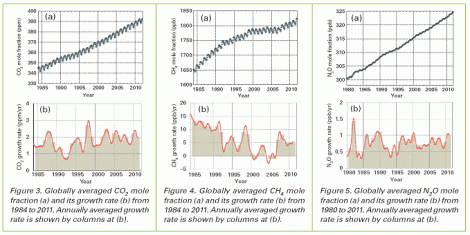
A literal greenhouse
Quick little update from the World Meteorological Organization:
The amount of greenhouse gases in the atmosphere reached a new record high in 2011, according to the World Meteorological Organization. Between 1990 and 2011 there was a 30% increase in radiative forcing — the warming effect on our climate — because of carbon dioxide (CO2) and other heat-trapping long-lived gases.
Since the start of the industrial era in 1750, about 375 billion tonnes of carbon have been released into the atmosphere as CO2, primarily from fossil fuel combustion, according to WMO’s 2011 Greenhouse Gas Bulletin, which had a special focus on the carbon cycle. About half of this carbon dioxide remains in the atmosphere, with the rest being absorbed by the oceans and terrestrial biosphere.
That’s from the specifically titled “Press Release No. 965,” which I appreciate because it suggests a scientist completing his calculations, then wearily turning to his typewriter to knock out yet another press release about how doomed we are.
Press Release No. 965 includes graphs showing how three of those gases — carbon dioxide, methane, and nitrous oxide — have increased since the 1980s.

WMOClick to embiggen.
You know what would be reassuring? A little tapering off, maybe. Just a tiny little dip would be great, show we’re making progress. But, nope. Up, up, up! There’s money to be made, electricity to be produced! What’s the worst that could happen?
Climate Central explains why you should be wailing and rending your clothes if you are not yet wailing and rending your clothes.
[D]espite all of this knowledge, the world has largely failed to act on reducing emissions. The best they could do at a UN-sponsored climate meeting in Copenhagen in 2009 was to agree to a non-binding target of limiting the world’s greenhouse-gas-triggered temperature increase to no more than 2°C (3.6°F) above preindustrial levels to limit the potential damage. Just a year later, it was already clear that they wouldn’t come close to making it.
As we mentioned yesterday, the next U.N. Climate Change Conference starts Monday in Qatar. If the past two years are any guide, the net effect on the environment from the gathering will likely be negative: huge quantities of carbon expended to discuss plans that will not reduce carbon at all.



